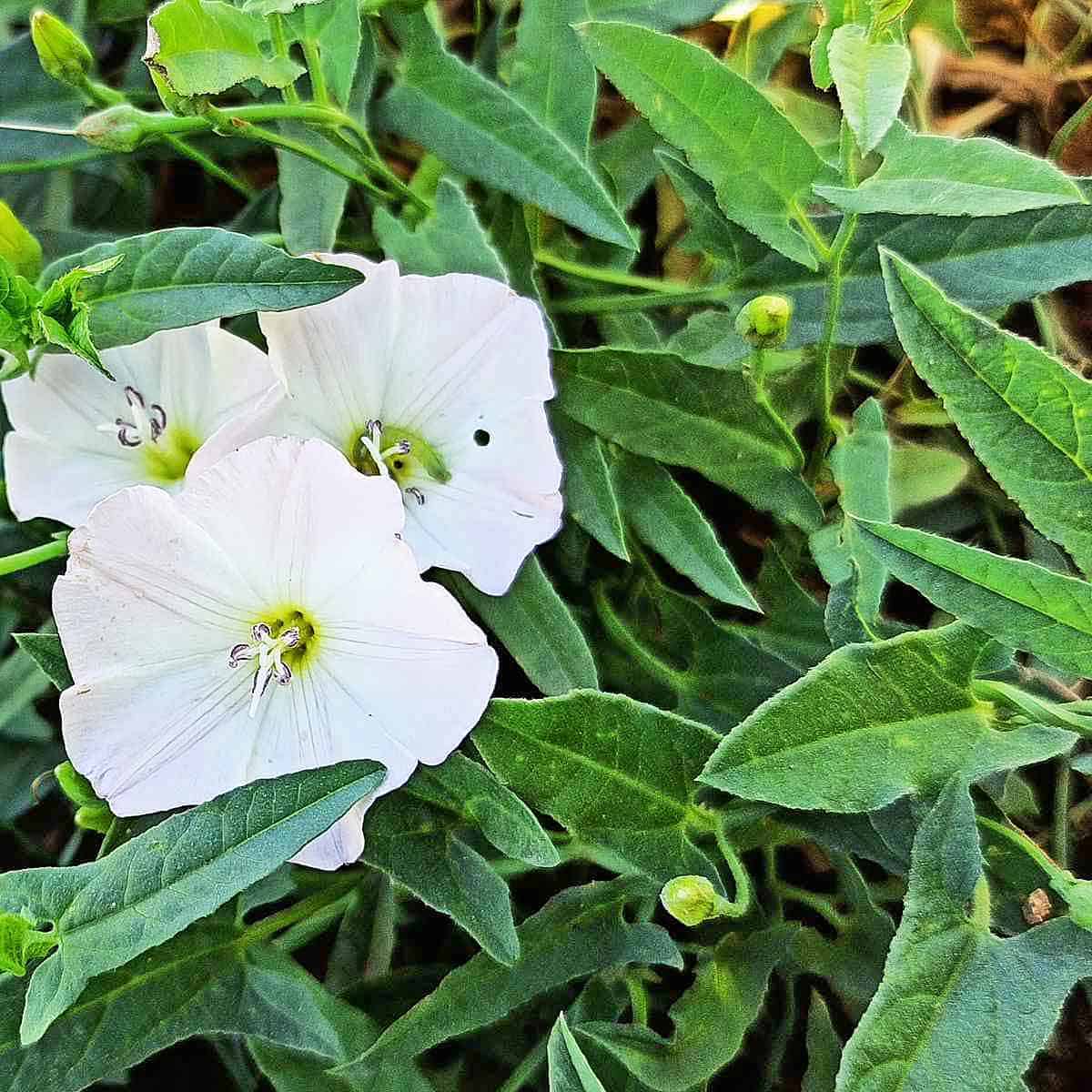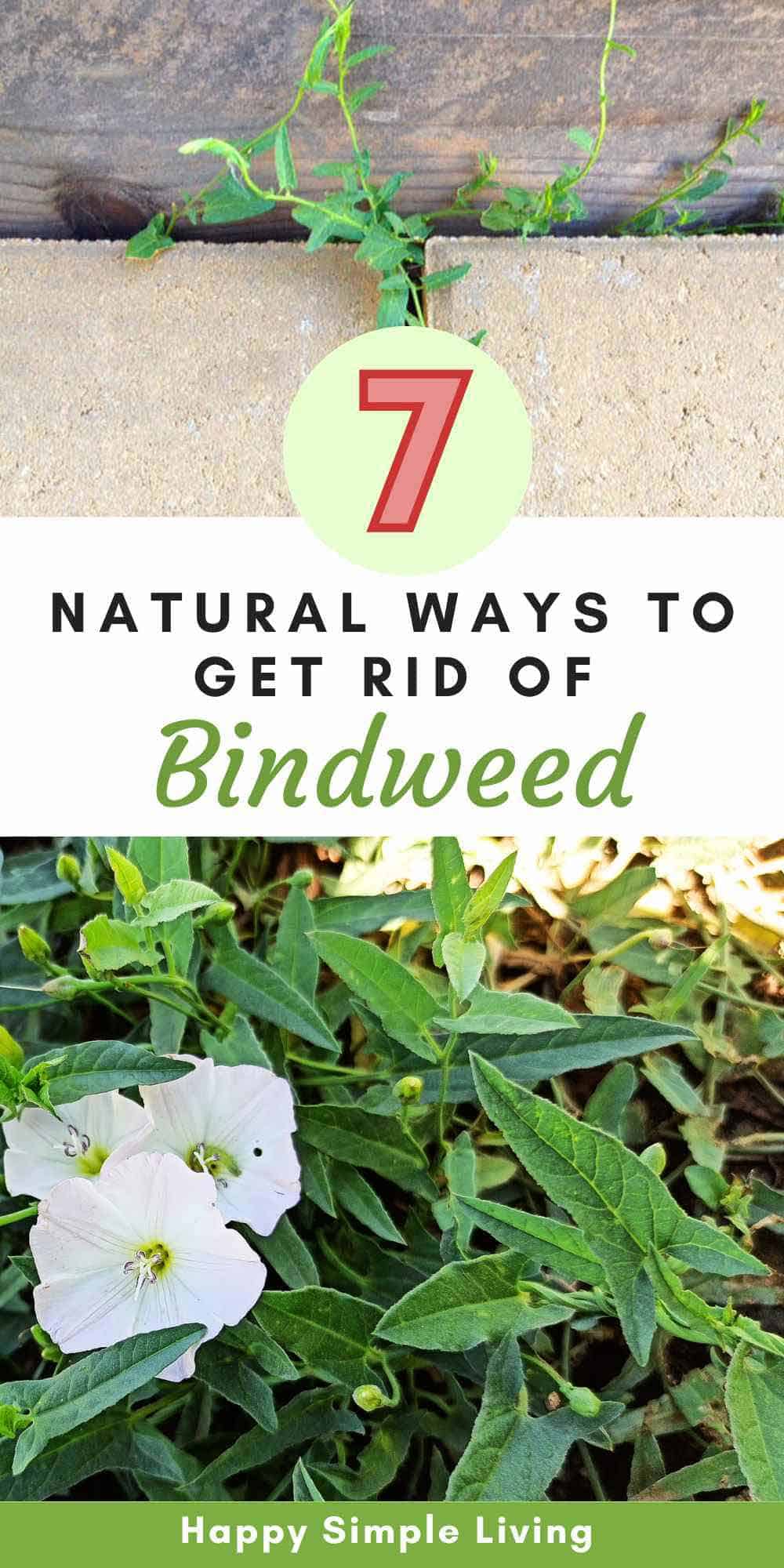To get rid of bindweed organically, regularly pull it out by hand, ensuring you remove all roots. You can also apply vinegar or salt directly to the leaves for effective control.
Bindweed, a persistent perennial weed, can disrupt your garden’s health. Its deep roots make it challenging to eliminate, requiring consistent effort. Organic methods offer an eco-friendly approach without harming beneficial organisms. Hand-pulling is most effective when done regularly, particularly after rainfall.

Credit: www.wikihow.com
Vinegar, a natural herbicide, can weaken bindweed when sprayed directly onto the leaves. Mulching helps smother the plant, blocking sunlight and preventing regrowth. Combining these methods increases your chances of success. With patience and diligence, you can reclaim your garden from this invasive weed and promote a healthier environment for your plants.
How to Get Rid of Bindweed Organically : Step by Step Guide
The Bindweed Battle: An Introduction
Bindweed is a fast-growing weed that can quickly take over gardens. Its vines can smother other plants. This makes it a challenging foe for gardeners.
Bindweed has white or pink trumpet-shaped flowers. It often grows in gardens, fields, and along fences. The roots can grow deep, making it tough to remove.
Choosing to go organic helps protect the environment. Chemical herbicides can harm helpful insects and soil health. Organic methods focus on natural solutions that promote plant health.
Organic methods include manual removal and using mulch. Mulching can block sunlight, slowing bindweed growth. Vinegar and salt can also be effective against bindweed.
Identifying Your Adversary
Bindweed is a creeping plant that can easily take over gardens. Its leaves are shaped like arrows and can be green or grayish. Flowers are usually white or pink, often trumpet-shaped.
Common habitats include gardens, fields, and roadsides. Bindweed loves sunny spots but can grow in partial shade. It thrives in rich, moist soil but can adapt to various conditions. Understanding where it grows helps in managing it.
Preventive Measures
Landscaping can help deter bindweed growth effectively. Use thick ground covers to block sunlight. Plants like clover or thyme can be great choices. They create a dense layer, making it hard for bindweed to thrive.
Choosing the right companion plants is also essential. Select plants that grow tall and wide. These plants can shade bindweed and limit its access to light. Sunflowers and zinnias are excellent options. They grow quickly and can outcompete bindweed for resources.
Natural Enemies Of Bindweed
Beneficial insects play a key role in controlling bindweed. These insects can help reduce bindweed populations naturally. Ladybugs, lacewings, and hoverflies are excellent choices. They feed on pests that harm plants, creating a balance.
Introducing these insects into your garden can be simple. Planting flowers like marigolds and daisies attracts them. A diverse garden also invites more natural predators. This method helps control bindweed without chemicals.
Natural predators can significantly impact bindweed growth. They feed on soft-bodied pests, leaving your plants healthier. Encouraging these insects creates a more sustainable gardening environment.
Organic Herbicides: Pros And Cons
Vinegar-based solutions can be an effective way to combat bindweed. The acetic acid in vinegar kills the plant. Use a solution with at least 10% acidity for best results. Spray it directly on the leaves during sunny weather. Avoid spraying on other plants, as it can harm them.
Citrus oil extracts are another organic option to fight bindweed. These extracts contain d-limonene, which can effectively kill unwanted plants. Mix citrus oil with water and spray it on bindweed. This solution is safe for the environment and easy to apply. Always test on a small area first.

Credit: m.youtube.com
Cultural Practices For Control
Soil solarization is an effective method to control bindweed. Cover the soil with clear plastic for several weeks. The sun heats the soil and kills weeds. This method works best in hot weather.
Mulching techniques can also help in managing bindweed. Use organic materials like straw or wood chips. Apply a thick layer around plants to block sunlight. This stops bindweed from growing.
Ensure to replace the mulch regularly. Keep the area well-maintained to prevent bindweed re-emergence. Consistent mulching helps keep your garden healthy.
Manual Methods That Work
Hand pulling is a simple and effective way to remove bindweed. Start by pulling on a dry day. Wet soil can make it harder to pull out the roots. Grip the plant near the base to avoid breaking it. Pull slowly and steadily to get the roots out.
Using tools can help with removal. A trowel or weeding fork can dig deeper. Make sure to remove the entire root. Leaving even a small piece can cause it to grow back. Clean tools after use to prevent spreading seeds.
Consider using a hoe for larger areas. This tool helps cut the bindweed at the soil level. Always check for new growth regularly. Stay persistent for the best results.

Credit: www.happysimpleliving.com
Monitoring And Maintenance
Regular inspections are key to managing bindweed effectively. Check your garden often for signs of this pesky weed. Look for its distinctive arrow-shaped leaves and white or purple flowers. Early detection can help you control its spread.
Long-term management strategies require consistent effort. Hand-pulling bindweed works well when the roots are shallow. Use a hoe to cut the weeds at the base. Cover areas with mulch to block sunlight. This will weaken the bindweed over time.
Consider planting competitive plants. They can outgrow bindweed and reduce its chances of survival. Natural herbicides like vinegar can also help. Apply it directly to the leaves for best results. Always monitor the area after treatment.
Frequently Asked Questions
How Can I Identify Bindweed In My Garden?
Bindweed typically has arrow-shaped leaves and white or pink trumpet-shaped flowers. It grows in spirals around other plants, making it easy to spot. Look for its extensive root system, which can spread quickly. Identifying it early helps in effective management and prevention of its spread.
What Organic Methods Can I Use To Kill Bindweed?
Organic methods to eliminate bindweed include using boiling water, vinegar, or salt solutions. Applying these directly to the leaves can kill the plant without harming the soil. Mulching and hand-pulling are effective too. Just ensure you remove the entire root to prevent regrowth.
Is It Possible To Control Bindweed Naturally?
Yes, controlling bindweed naturally is achievable with consistent effort. Regularly pulling the weeds and covering the area with mulch can suppress growth. Introducing competitive plants can also help. Consider using organic herbicides as a last resort to manage stubborn infestations.
How Long Does It Take To Get Rid Of Bindweed?
Getting rid of bindweed can take several weeks to months. The duration depends on the method used and the extent of the infestation. Regular monitoring and consistent treatment are crucial. Patience and persistence will yield the best results in eradicating bindweed.
Conclusion
Getting rid of bindweed organically is achievable with persistence and the right methods. Regularly monitor your garden and act promptly when you spot new growth. Using mulches and natural barriers can also help control its spread. Embrace these techniques for a healthier, bindweed-free garden and enjoy the beauty of your plants.

